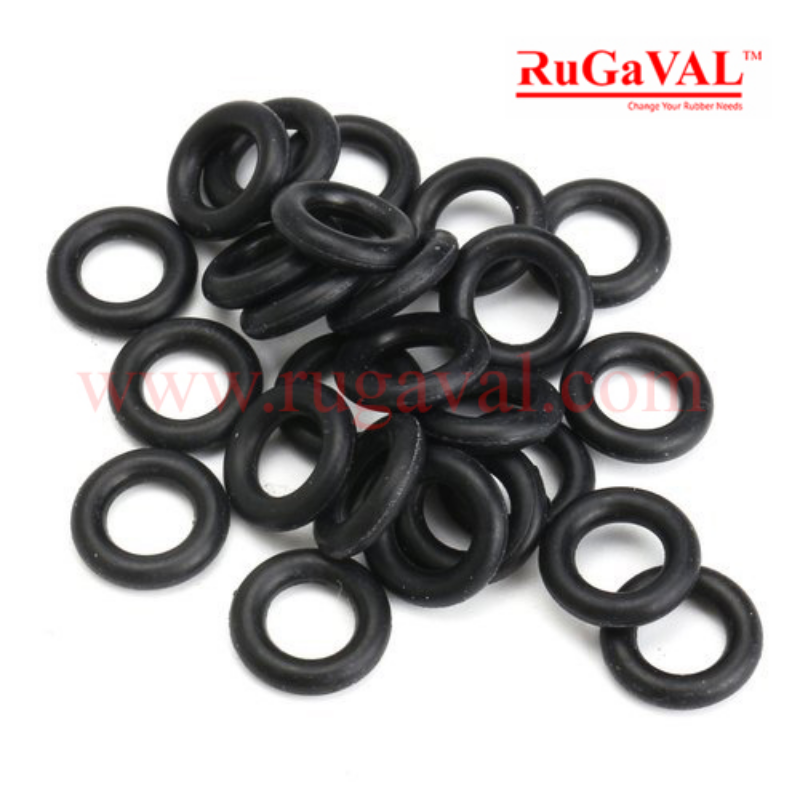Rubber Ring Applications | O-ring

As the name suggests, O-rings are circular, donut-shaped mountings which are compressed between two different components to form a better, tighter seal. In essence, they are very similar to a standard form of gasket, with the difference being that O-rings are specifically designed for industrial use in applications where they will be subjected to extreme temperatures, pressures or substances. In these cases, a standard gasket made of rubber, cork or metal would not withstand the tension exerted upon it, which is why O-rings are such a simple but effective solution to an age-old problem spanning many industries.
Rubber Ring Applications | O-ring
Different types of O-ring applications
One of the most crucial components of modern industry, the humble O-ring is as versatile as it is reliable. Despite having been first patented in 1896 by Swedish inventor J O Lundberg, the basic design of the O-ring has changed very little in the intervening century. Neither has the function it performs or the valuable service it provides, facilitating an airtight or watertight seal in any number of different applications and industries.
Of course, the materials used to construct O-rings have been developed and improved over the years, meaning that there are now a wide variety of elastomers used in O-ring manufacturing to meet the needs of a range of applications. From O-rings resistant to extreme temperatures to those impervious to chemical damage, there’s sure to be an O-ring to suit your specific situation. However, it’s imperative that before making a purchase, you consider which material would be satisfy your circumstances, since using an O-ring that is too large, too small or made of the wrong material could lead to its failure and potentially jeopardise the equipment it services.
In order to make an educated decision on which O-ring is right for you, this handy guide intends to provide some background on how O-rings work, how they’re made and how they lend themselves to a variety of different applications.
How does an O-ring work?
As the name suggests, O-rings are circular, donut-shaped mountings which are compressed between two different components to form a better, tighter seal. In essence, they are very similar to a standard form of gasket, with the difference being that O-rings are specifically designed for industrial use in applications where they will be subjected to extreme temperatures, pressures or substances. In these cases, a standard gasket made of rubber, cork or metal would not withstand the tension exerted upon it, which is why O-rings are such a simple but effective solution to an age-old problem spanning many industries.
By contrast, O-rings are constructed of more durable elastomers which are capable of withstanding the extreme conditions to which they are subjected. They work by being placed in the channel or groove (known in industrial terms as a gland) between two different parts of machinery, which can be either static or dynamic. When the two components are compressed together, the O-ring is designed so that its shape will mould to fit the unique dimensions of the surfaces pressing against it, thus creating an impermeable seal which won’t allow either water or air to enter. The greater the amount of pressure exerted on the O-ring, the tighter the seal it will create – up to a point. However, it’s essential to ensure that not too much pressure is applied to the O-ring or it will become damaged and the seal itself will become compromised.
Another attractive selling point of O-rings is that once the two compressed parts of the machinery are detached and the pressure being exerted on the O-ring is relaxed, it will return to its original donut shape. While this does mean that O-rings can be reused for several different purposes, it should be remembered that it cannot be recycled indefinitely. Eventually, the pressures exerted upon it will negatively impact the consistency and resiliency of the O-ring and it must be replaced with a fresh one if an adequate seal is to be maintained.
How is an O-ring made?
Due to the fact that the design of O-rings has remained largely unchanged since their inception over a hundred years ago, the manufacturing process also remains relatively simple. The rings can be created through the use of a number of different techniques, including compression moulding, injection moulding, transfer moulding or vulcanisation. Nowadays, modern advances in scientific and technology understanding mean that O-rings can be constructed from a wide variety of materials, including nitrile, silicone and fluorocarbons (among many others). The type of material used will be dependent on the specific purpose and circumstances of the O-ring in question.
Different types of O-ring applications
Whether it’s for use in an industrial power plant, as part of heavy-duty agricultural machinery, underwater in a marine environment or amongst the cogs and pistons of the automotive industry, there’s sure to be an O-ring that’s perfect for every purpose. But with so many materials available to choose from, it can be difficult to know which one is right for you.
Here’s a breakdown of the various kinds of O-ring available, as well as the advantages of each and the possible applications to which they may be suited.
Nitrile O-rings
Widely regarded as a general-purpose type of O-ring, Nitrile elastomers (also known as Buna-N or NBR) offer a respectable temperature range of between -50°C and 120°C, with excellent resistance to tears and abrasive treatment. Nitrile also enjoys decent resistance to water, oils and some hydraulic liquids, although it is susceptible to damage from automotive brake fluid, halogenated hydrocarbons, ketones, nitro hydrocarbons or phosphate ester. As such, it’s suitable for use in select purposes in agriculture, the automotive industry, dairy, mining, plumbing and railways.
Silicone O-ring
With one of the widest temperature ranges of any O-ring material, silicone O-rings can withstand temperatures of between -100°C and 300°C. Indeed, this hardy material has even be known to tolerate greater extremes (-115°C to 315°C) for a limited time, making it an ideal choice for applications where very high or low temperatures are a factor. It offers great flexibility and performs brilliantly alongside water, steam or petroleum, but is prone to damage from abrasion and tearing. As a result, it’s better suited to static applications rather than dynamic ones.
Viton O-ring
Also known as FKM O-rings, Viton™ O-rings are made from fluorocarbons and boast resistance to temperatures from -40°C up to 250°C, low gas permeability, superb mechanical characteristics and a low compression set. They are highly suitable for use with acids, halogenated hydrocarbons, petroleum and silicone fluids or gases. However, they should not be used in conjunction with amines, esters, ethers with a low molecular weight, hot hydrofluoric acids or Skydrol. Their incredible versatility makes them popular in a wide range of industries, including the automotive sector, aviation, chemical processing and mechanical engineering plants.
Large O-ring
As well as the economic advantages of vulcanisation opposed to moulding, the unique method of manufacturing O-rings means that there is no limit on the size to which they can be created. Standard larger O-rings range up to 25.4mm in size, though it is a fairly simple process to manufacture a bespoke O-ring to any specifications required. As with standard Vulc O-rings, dispensing with the need for moulds and expensive tooling equipment not only slashes the cost incurred, but also greatly reduces lead times, making them ideal for applications of all kinds.
Give us a call on +603-5191 8961 or drop us an email at rugavalrubber@gmail.com and we’ll be happy to help. We’re waiting to hear from you.
